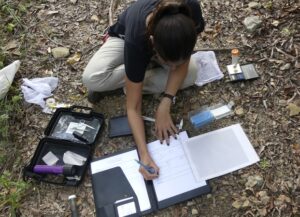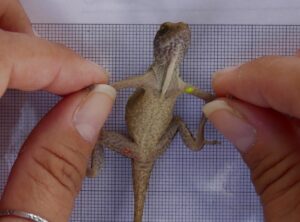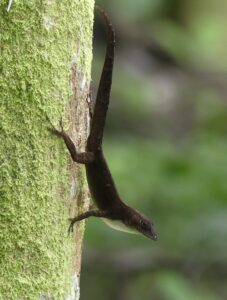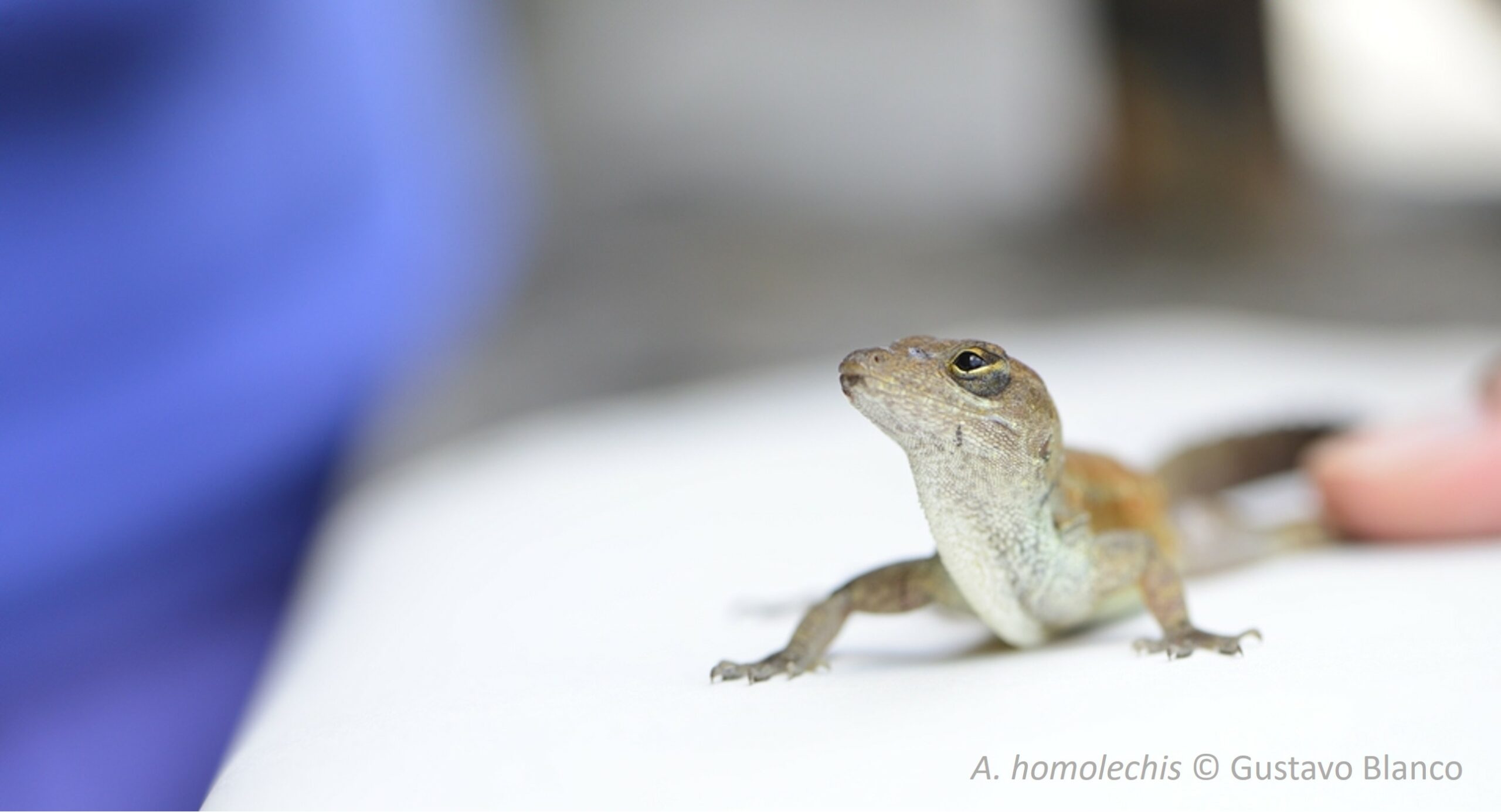How does urbanization affect wildlife? In Cuba, the endemic lizard Anolis homolechis has become a model species for a team of researchers exploring various hypotheses to explain the differences observed between suburban and forest populations. A recent study offers new insights.
Urbanization brings profound changes to ecosystems, disrupting the living conditions of many animal species. While some species disappear, others manage to persist in these altered environments—often displaying noticeable changes in their behavior, morphology, or physiology. This is especially true for some lizards of the genus Anolis, which have successfully colonized urban areas despite the drastic transformations of their natural habitats.
A Cuban anole under the microscope

Annabelle Vidal working in the field
In Cuba, Anolis homolechis—a medium-sized endemic lizard—is found in both forested and suburban environments. Its presence in habitats altered by human activity makes it an excellent subject for studying the effects of urbanization on wildlife.
As part of her PhD research, Annabelle Vidal studied this species over several years to better understand the differences between natural and suburban populations. Her work, supported by Caribaea Initiative, has already revealed several notable contrasts between these two habitats.
Larger in the city: A confirmed pattern
Among the findings on Anolis homolechis—and echoed in studies of other Anolis species—one result stands out: individuals living in urban areas tend to be larger than their forest-dwelling counterparts.

Fluorescent elastomer implants are clearly visible through the skin
One hypothesis suggests that this size difference may be driven by survival: larger individuals might enjoy better chances of survival in urban environments, leading to a greater representation of large-bodied adults. This is the idea tested in a recent study led by Annabelle Vidal and published in the journal Biology.
Over a period of 20 months, lizards from four sites—two in forest habitats and two in suburban areas—were captured, measured, and marked with fluorescent elastomer implants. These unique markings allowed Annabelle to identify each individual upon recapture. By analyzing recapture data, the researchers were able to estimate the apparent survival rates of the lizards based on body size and habitat (with “apparent” survival meaning that migration events are not accounted for).
Size and survival: A relationship unaffected by habitat
Throughout the study, a total of 735 adult lizards were captured and marked, with nearly 18% recaptured at least once.
The data revealed that females had higher survival rates than males—a result not unexpected, as males are known to defend large territories, making them more vulnerable to injury and predation. However, the relationship between body size and survival, in both males and females, was consistent across habitats. This contradicts the original hypothesis, suggesting that the larger size of urban lizards is not the result of size-related survival advantages.
A mystery still to be solved

© Sergio L. del Castillo
If survival doesn’t account for the size difference, what other explanations remain? Several avenues are still under consideration. Sexual selection may play a role, particularly if larger males have a competitive edge when vying for mates in urban settings. Other possible factors include food availability or environmental variables such as temperature or artificial light.
Interestingly, a recent study on a closely related species showed that artificial lighting at night can boost lizard growth—an effect worth investigating further in Anolis homolechis.
While this study offers valuable insights into the factors influencing body size in urban lizards, the full explanation remains elusive. Further research will be essential to uncover the mechanisms behind these differences and to better understand how species adapt to human-altered environments—a critical challenge in an increasingly urbanized world.
Reference
Vidal, A., Cézilly, F. & Pradel, R. (2024). Contemporary survival selection fails to explain observed patterns of phenotypic divergence between suburban and forest populations of the Cuban endemic lizard, Anolis homolechis. Biology 13: 1019.

